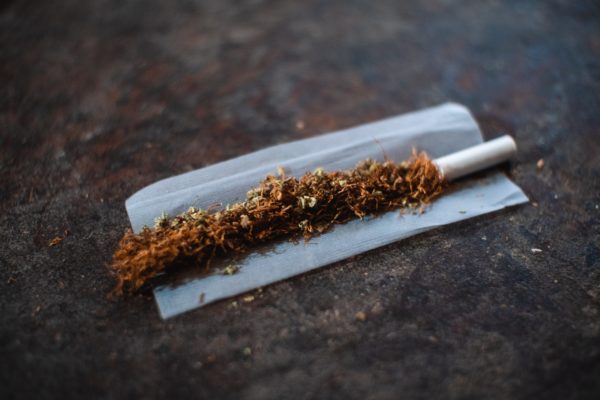
Types of Tobacco, Uses, Benefits, And More
If you’re a smoker, you may think you know everything there is to know about tobacco. But, do you really? Tobacco is a plant with a long, rich history, and there are many ways to consume it. Tobacco use has been documented for over 8,000 years, so it’s no surprise it’s been the subject of a ton of innovation. Buckle up, tobacco enthusiasts, because today we’re going to learn everything you’ve ever wanted to know about tobacco—from the history to the different types, the uses, the benefits, and more.
What Is Tobacco?
If you’re not quite sure what tobacco is, you’re not alone. The tobacco most people are familiar with has been processed in some way. However, some may not know that tobacco starts as a leafy green plant. Tobacco plants are indigenous to the Americas, but they’re now grown all over the world.
Tobacco leaves contain high levels of the addictive chemical nicotine, which is why so many enjoy it. Once harvested, the leaves are heavily processed and then can be smoked, applied to the gums, or inhaled. Nicotine can even be extracted from the tobacco leaf and concentrated, then smoked in an e-cigarette.
Why Do People Use Tobacco?
Humans have been consuming tobacco for a very long time for a variety of reasons. In some cultures, tobacco plays a sacred role in spiritual ceremonies. In others, smoking tobacco is traditionally used to celebrate momentous events, such as graduations or the birth of a baby. Tobacco can help calm the nerves and help people focus, and many smokers feel it helps them relax.
When tobacco is smoked, nicotine is absorbed through the lungs and into the bloodstream. When it’s chewed or sniffed, nicotine is absorbed through the membranes in the mouth and nose, where it then travels through the body to the brain. Nicotine triggers the release of dopamine, a brain chemical that’s often associated with pleasure.
Tobacco can have various effects, depending on the person and how it’s consumed. Some people may feel stimulated by tobacco, while others feel relaxed.
A Brief History of Tobacco
Humans have been growing and using tobacco for centuries. Tobacco cultivation likely began around 5,000 B.C., alongside the development of maize-based agriculture in Central Mexico—although it’s possible it was used even earlier. Originally, Native Americans used tobacco in religious ceremonies and for medical purposes.
It was believed to be a cure-all remedy, used for ailments like asthma, earaches, bowel problems, fever, sore eyes, depression, insect bites, and burns.
When Christopher Columbus arrived in America, Native Americans gifted him tobacco. It gained instant popularity in Europe, where it was also thought to have magical healing properties. By the early 17th century, however, scientists and philosophers began to notice some of the negative effects of excessive tobacco consumption—such as difficulty breathing and addiction.
In 1632, Massachusetts passed the first recorded tobacco-related legislation, making public smoking illegal.
Today, tobacco remains popular, although fewer people smoke than in previous generations. E-cigarettes have gained massive traction, especially among younger users. Nevertheless, cigarettes, pipes, chewing tobacco, and snuff are still widely used worldwide.
Types of Tobacco Leaves
Tobacco plants are relatives of the potato, eggplant, and tomato. They grow to about two feet tall and have oval-shaped leaves that can reach 10–20 inches in length. The plants can bloom pink, white, or yellow flowers, producing tiny fruits. The leaf contains the nicotine, so that’s what gets harvested. Different plants contain various levels of nicotine—some as much as 18%.
Below are some of the most common types of tobacco used around the world.
Virginia Flue-Cured Tobacco
Virginia flue-cured tobacco is the most popular choice for cigarettes and pipes. Known as the “smoker’s tobacco,” it’s famous for its mild burn and slightly sweet flavor and aroma. The name Virginia refers to the seed type and curing method—not its place of origin. This light yellow tobacco has higher sugar and nitrogen content, resulting in a smooth, easy-smoking experience.
Burley Tobacco
Burley tobacco is lighter and air-cured. After curing, it contains very little sugar and has a natural chocolatey, nutty, and bitter flavor. To make it more palatable, Burley is often sweetened or blended with other tobaccos. It’s frequently used in both cigarettes and pipe tobacco as a solid, balanced base.
Cavendish Tobacco
Cavendish isn’t a plant variety—it’s a unique processing method that can be applied to many types of tobacco. The Cavendish process adds sweetness, flavor, or both to the tobacco. It’s commonly used in blends to balance burn characteristics and enhance flavor.
Perique Tobacco
Grown exclusively in St. James Parish, Louisiana, Perique tobacco is air-cured and then aged in barrels for 12–18 months. This fermentation produces a rich, bold tobacco with peppery, fig-like flavors and a plum-pine finish. Due to its strength, it’s usually blended with milder tobaccos like Virginia.
Latakia Tobacco
Latakia tobacco originates in Syria and Cyprus. It’s fire-cured by hanging the leaves above burning aromatic herbs and wood, which gives it a spicy, smoky aroma with hints of herbs and leather. It’s commonly used in English-style tobacco blends and adds depth to cigarettes and pipe tobacco.
Rustica Tobacco
Also known as “wild tobacco,” Rustica is significantly stronger than other types, with nicotine levels around 9% (compared to 3% in most others). It grows widely—from the Americas to India, Russia, and Africa. Rustica is full-flavored and is commonly used in hookahs, pipes, and chewing tobacco.
Kentucky Tobacco
Kentucky tobacco is a subtype of Burley that is fire-cured, giving it a smoky, slightly sweet flavor. It’s mild, easy to smoke, and often used in pipes and cigarettes.
Organic Tobacco
Organic tobacco isn’t a specific type of leaf but a growing category. Like fruits and vegetables, standard tobacco often relies on pesticides. Organic tobacco avoids these chemicals and is minimally processed. Many users claim it provides a cleaner, purer taste. Most major tobacco leaf types are available in organic form.
